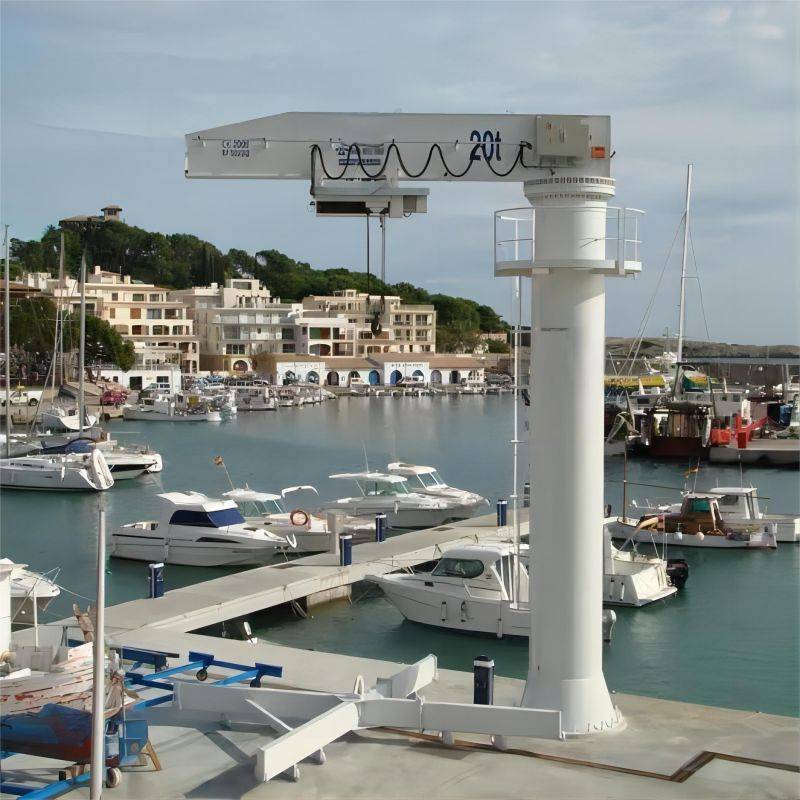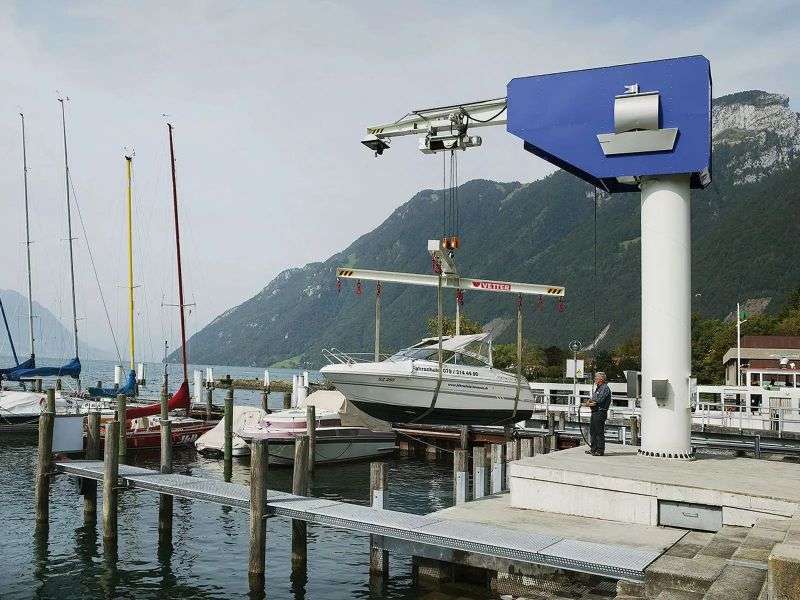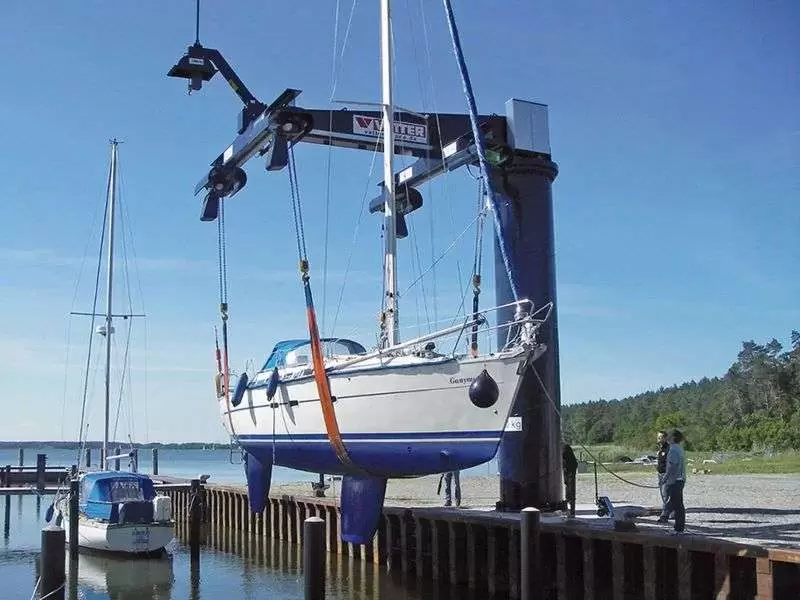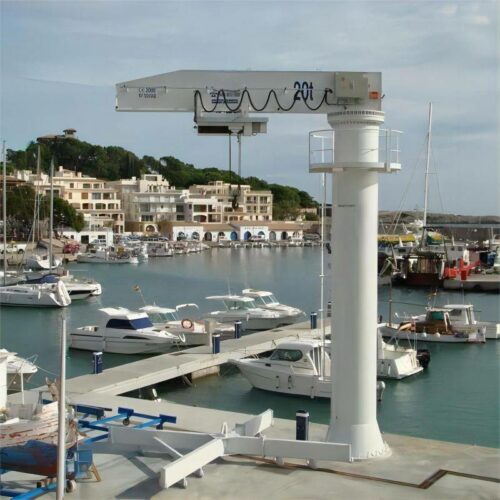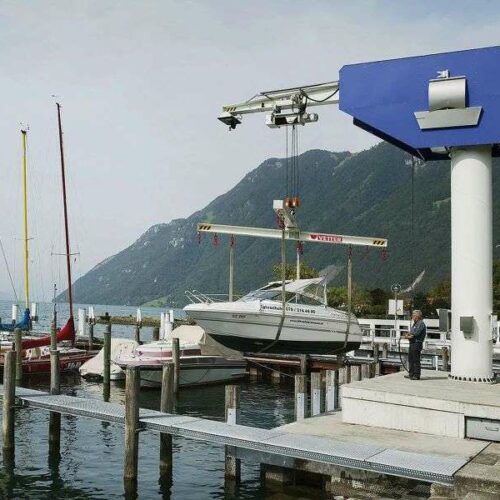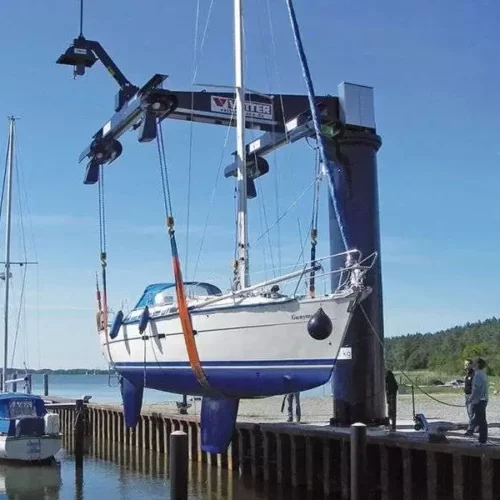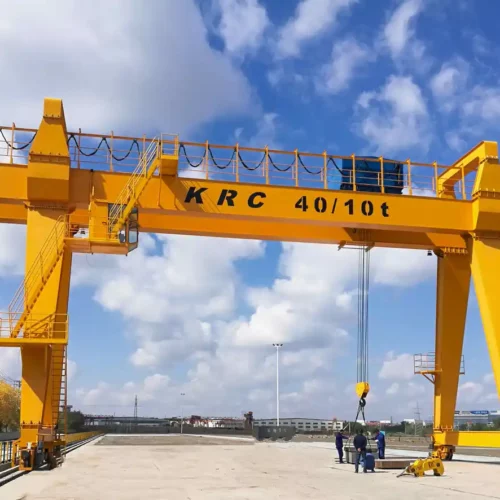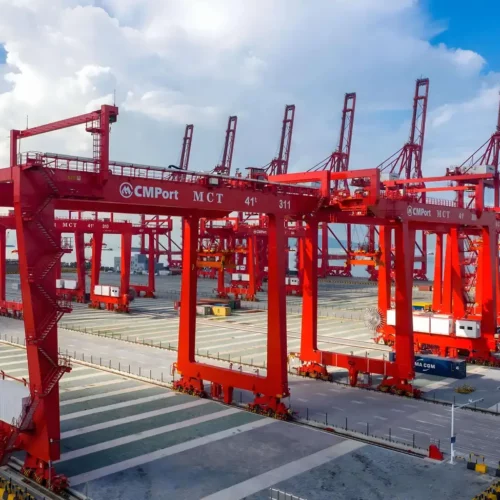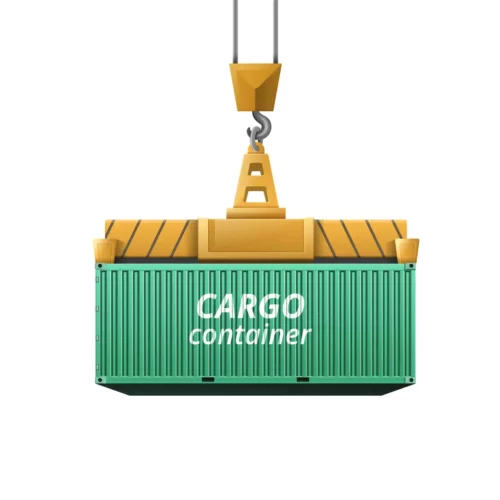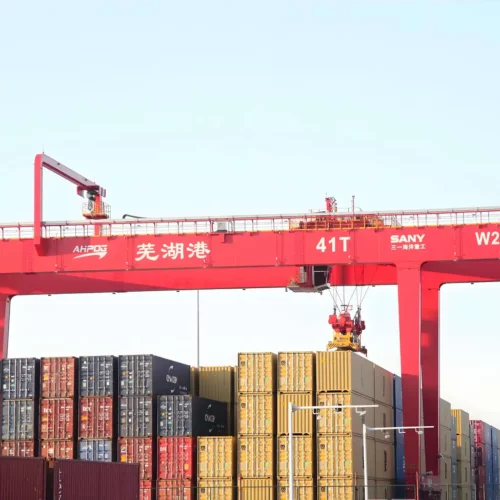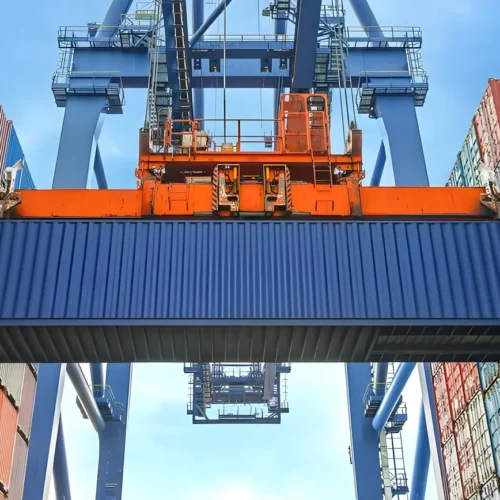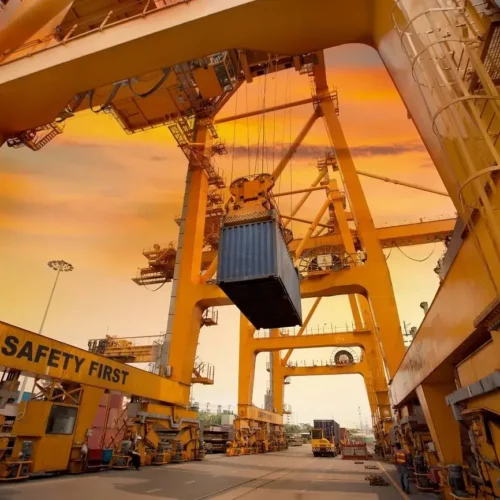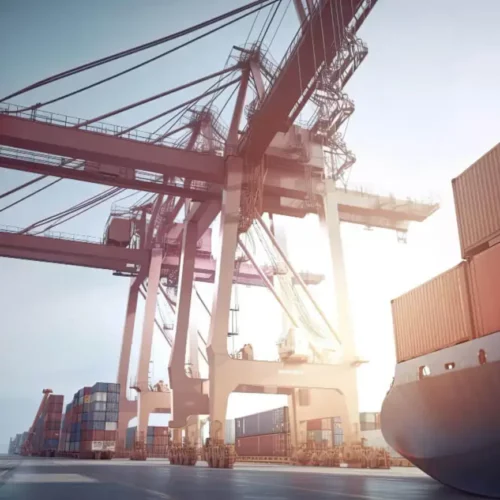deck crane Safety Certifications
When operating deck cranes, ensuring safety is paramount. Various safety certifications and standards are established to mitigate risks and ensure safe crane operation, particularly in maritime and offshore environments. Notable certifications include:
1. Lifting Operations and Lifting Equipment Regulations (LOLER): Enforced in the UK, LOLER mandates periodic inspections, maintenance, and thorough examinations of lifting equipment, including deck cranes, by competent personnel.
2. Occupational Safety and Health Administration (OSHA): In the USA, OSHA standards (e.g., 29 CFR 1910.179) cover the safe use and maintenance of cranes, necessitating regular inspections and operator training.
3. International Maritime Organization (IMO): IMO sets out safety protocols, such as the International Convention for the Safety of Life at Sea (SOLAS), which mandates that deck cranes on ships comply with safety requirements and are periodically inspected.
4. Det Norske Veritas – Germanischer Lloyd (DNV-GL): This certification ensures that offshore and marine lifting appliances meet established safety and performance standards, focusing on design, materials, and operational testing.
5. American Bureau of Shipping (ABS): ABS provides guidelines for cranes used in the maritime industry, ensuring compliance with safety standards through certification and inspections.
6. Bureau Veritas (BV): BV certification involves rigorous assessments to verify that lifting equipment like deck cranes adheres to regulatory standards and is operationally safe.
7. CMAA (Crane Manufacturers Association of America): This includes recommendations for crane design, operation, and maintenance, ensuring safety through compliance with industry standards.
In addition to these certifications, operators should undergo specialized training and hold certifications such as Crane Operator Certification from recognized bodies (e.g., NCCCO in the USA). Regular audits, adhering to maintenance schedules, and conducting pre-operation checks are critical practices to uphold safety standards.
List Reference Technical Parameters of “deck crane”
Certainly! Here are some key technical parameters commonly associated with deck cranes:
1. Safe Working Load (SWL):
– Maximum load the crane can safely handle, usually given in tonnes.
2. Boom Length:
– Length of the extendable arm, often measured in meters.
3. Lifting Height:
– Maximum vertical distance the crane can lift a load, typically measured from the deck to the highest hook position.
4. Radius:
– The horizontal distance between the crane’s pivot point and the load’s vertical line. It impacts the lifting capacity.
5. Hoisting Speed:
– Velocity at which the load can be lifted or lowered, generally expressed in meters per minute.
6. Slewing Angle:
– Range of rotation of the crane arm, usually up to 360 degrees for unrestricted rotation.
7. Slewing Speed:
– Speed at which the crane’s arm can rotate around its base, typically given in degrees per second.
8. Luffing Speed:
– Speed at which the boom can be raised or lowered, measured in meters per minute or degrees per second.
9. Winch Capacity:
– The power and capacity of the winch used to lift loads, usually tied to the hoisting speed and load weight.
10. Power Source:
– Type of power system the crane uses (electric, hydraulic, diesel, etc.)
11. Control System:
– The mechanism for operating the crane, which can be manual, semi-automated, or fully automated.
12. Duty Class:
– Classification of the crane’s robustness and suitability for different operational environments (e.g., light, moderate, or heavy-duty).
13. Operational Environment:
– Conditions where the crane can effectively operate, such as temperature ranges and weather resistance.
14. Standards Compliance:
– Adherence to international maritime and safety standards such as those set by Lloyd’s Register, DNV GL, or ABS.
Understanding these parameters is crucial for selecting a deck crane that meets specific operational requirements and ensures safe and efficient cargo handling.
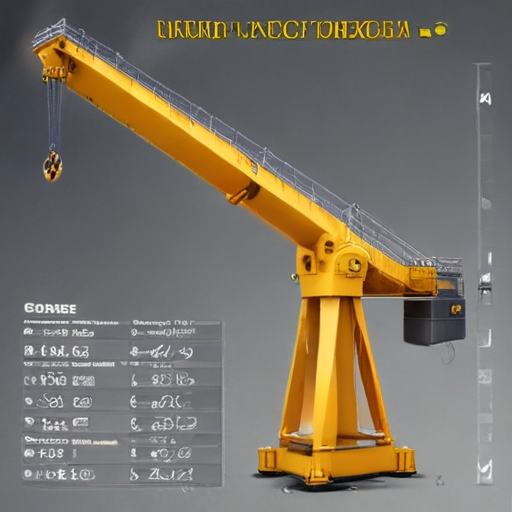
List Product features of “deck crane”
Certainly! Here’s a list of the key features of a deck crane, summarized in under 300 words:
1. Load Capacity: Varies significantly based on model, ranging from a few tons to several hundred tons, suitable for different types of maritime operations.
2. Compact Design: Optimized for the limited space available on the decks of vessels, ensuring efficient space utilization without compromising performance.
3. 360-Degree Rotation: Many deck cranes feature full rotation capabilities, allowing for flexible and versatile load handling.
4. Hydraulic Systems: Predominantly powered by advanced hydraulic systems, providing smooth and precise control over lifting, lowering, and swiveling movements.
5. Telescopic Boom: Some deck cranes come with a telescopic boom to extend reach and access difficult areas, thereby enhancing operational versatility.
6. Weather Resistance: Constructed with corrosion-resistant materials and coatings to withstand harsh marine environments, including saltwater, wind, and UV exposure.
7. Safety Features: Equipped with safety systems such as overload protection, emergency shut-off, and load monitoring to ensure safe operations.
8. Remote Operation: Modern deck cranes can be operated remotely via advanced control systems, enhancing safety and efficiency, especially in hazardous conditions.
9. Ease of Maintenance: Designed for easy access to critical components, facilitating regular maintenance and potential repairs without significant downtime.
10. Customization Options: Available with various customization options to meet specific operational requirements, including different boom lengths, lifting capacities, and mounting configurations.
11. Compliance with Standards: Designed and manufactured in accordance with international maritime and safety standards, such as ABS (American Bureau of Shipping) and DNV-GL (Det Norske Veritas – Germanischer Lloyd).
12. Energy Efficiency: Many modern models incorporate energy-efficient technologies to reduce fuel consumption and operational costs.
By focusing on these key features, deck cranes offer robust, reliable, and adaptable solutions for maritime lifting and handling tasks.
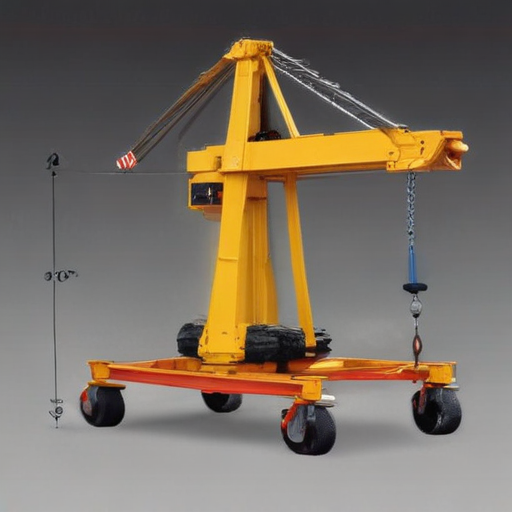
List Various Types of “deck crane”
Deck cranes are essential utilities on ships and offshore platforms, facilitating the handling of cargo, equipment, and other materials. Here are various types of deck cranes, fulfilling distinct needs based on their design and functionality:
1. Hydraulic Deck Crane:
Utilizes hydraulic systems for efficient and powerful lifting operations. Known for their smooth and precise control, making them ideal for heavy-duty tasks.
2. Electric Deck Crane:
Powered by electric motors, offering a more environmentally friendly option. These cranes are often used where hydraulic power is impractical or in eco-sensitive areas.
3. Knuckle Boom Crane:
Features articulated joints, much like a human finger, allowing for compact storage and a wide range of motion. Particularly useful on smaller ships or in confined spaces.
4. Telescopic Boom Crane:
Equipped with a boom that can extend and retract, providing versatile reach. Ideal for applications requiring variable boom lengths.
5. Fixed Boom Crane:
Has a rigid, non-telescopic boom. Despite limited movement, it offers stability and strength for specific lifting tasks.
6. Gantry Crane:
Utilizes a crane mounted on a gantry, which provides a stable framework. Often used for intensive lifting operations in shipyards and docks.
7. Davit Crane:
Includes a small, often manually operated device, perfect for handling lighter loads like life rafts and smaller equipment.
8. Marine Deck Crane:
Specifically designed for marine environments with features like corrosion resistance and precise controls, ensuring safe and efficient cargo handling.
9. Emergency Handling Crane:
Designed for critical operations, such as lifesaving and emergency equipment handling. Typically found on passenger ships and offshore platforms.
10. Provision Crane:
Often smaller in scale, used for handling ship provisions and supplies. Easy to operate and install on various types of vessels.
Each type of deck crane has unique features tailored for specific maritime tasks, enhancing efficiency and operational safety across the maritime industry.
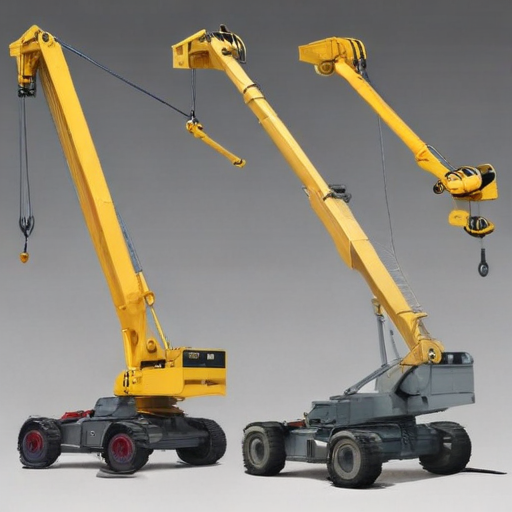
List Application of “deck crane”
A deck crane is an essential piece of equipment used in various maritime operations due to its versatility and efficiency. Here are some primary applications of deck cranes:
1. Cargo Handling: Deck cranes are vital for loading and unloading cargo in ports and on ships, ensuring the swift transfer of goods without relying on shore-based facilities.
2. Offshore Operations: They are used on offshore platforms for transferring supplies, equipment, and personnel between vessels and the platform, facilitating smooth operations in oil and gas fields.
3. Construction and Maintenance: On construction vessels and barges, deck cranes assist in assembling, installing, and maintaining structures like bridges, piers, and offshore wind turbines.
4. Fishing Industry: These cranes aid in the deployment and recovery of fishing nets, traps, and other equipment, enhancing the efficiency of commercial fishing activities.
5. Military Applications: Naval vessels utilize deck cranes to handle weapons, equipment, and supplies, supporting various logistic and operational needs.
6. Rescue Operations: In emergency scenarios, deck cranes help in lifting and deploying rescue boats, life rafts, and other vital equipment for maritime search and rescue missions.
7. Yacht and Marine Tourism: On luxury yachts and cruise ships, deck cranes are employed to manage recreational equipment, such as jet skis and small boats, enhancing the leisure experience.
8. Dredging Operations: Deck cranes facilitate the handling of dredging equipment, pipes, and spoil management on dredging vessels, essential for maintaining navigable waterways.
The efficiency, flexibility, and capability to operate in challenging maritime environments make deck cranes indispensable across these applications, ensuring the smooth and effective execution of maritime operations.
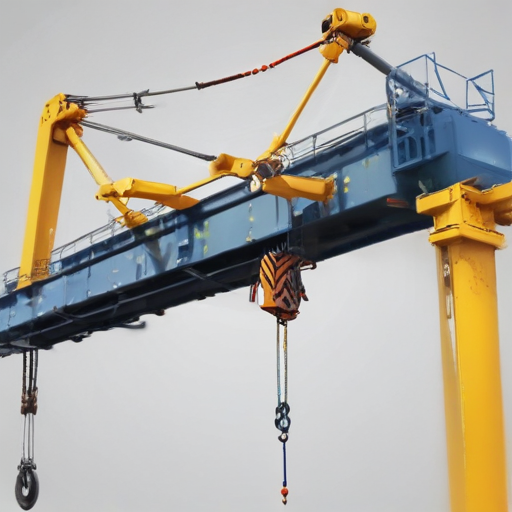
List Buyer Types of “deck crane”
Sure, here are the primary buyer types for deck cranes:
1. Shipping Companies: These companies use deck cranes to load and unload cargo from ships efficiently. This is crucial for operations that require frequent loading and unloading at different ports.
2. Offshore Oil and Gas Companies: These firms use deck cranes on drilling rigs and oil production platforms to handle equipment and supplies. The cranes must be durable and able to operate in harsh marine environments.
3. Marine Construction Companies: These entities engage in building marine structures such as jetties, piers, and bridges. Deck cranes are essential for lifting heavy construction materials and equipment.
4. Salvage Operations: Companies specializing in marine salvage operations employ deck cranes to recover sunken vessels and cargo from the seabed.
5. Government Agencies: Navies, coast guards, and other governmental marine departments use deck cranes for various functions, including logistical support and disaster response.
6. Fisheries: Commercial fishing operations utilize deck cranes for handling heavy fishing nets, traps, and cargo.
7. Research Organizations: Marine research vessels use deck cranes to deploy and retrieve scientific equipment, submersibles, and other research apparatus.
8. Utility Companies: Some utility companies may require deck cranes for maintenance and installation of marine-based infrastructure like wind turbines and underwater cables.
Each of these buyer types demands deck cranes with specific features, such as robustness, precision, and the ability to operate under challenging conditions. Manufacturers often design customized solutions to meet the unique needs of these varied sectors.
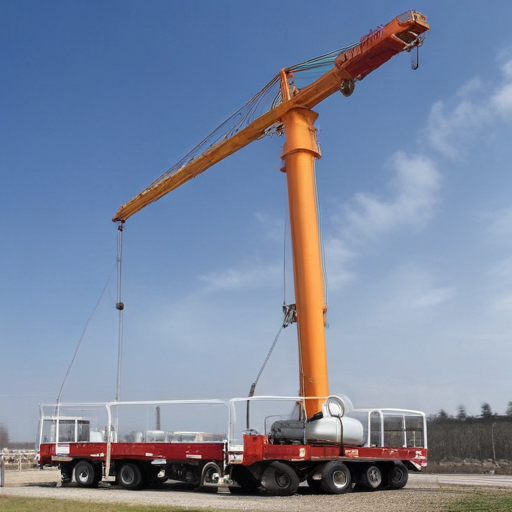
List “deck crane” Project Types for Different Industries
Sure, here are various project types involving deck cranes for different industries, presented concisely:
1. Maritime Industry
– Shipbuilding: Installation of deck cranes on new commercial and military vessels.
– Ship Repair and Maintenance: Upgrading or overhauling existing deck cranes.
– Cargo Handling: Designing cranes for efficient container loading/unloading in ports.
2. Offshore Oil and Gas
– Rig Construction: Integrating deck cranes in the building of offshore drilling platforms.
– Service Vessels: Equipping supply ships with specialized cranes for transporting drilling equipment and supplies.
– Renewable Energy: Installing cranes on vessels supporting offshore wind farm construction.
3. Fishing Industry
– Fishing Vessels: Designing and installing cranes for handling heavy nets and catches.
– Aquaculture: Equipping hatchery and farm support vessels with cranes for operational tasks.
4. Naval and Defense
– Warships: Providing cranes for various naval operational needs.
– Search and Rescue: Equipping vessels with cranes for recovery missions and equipment deployment.
5. Construction Industry
– Bridge and Pier Construction: Utilizing deck cranes on barges for overwater construction.
– Heavy Lifting: Employing floating cranes in large-scale construction projects where traditional cranes are ineffective.
6. Research and Exploration
– Oceanographic Vessels: Equipping research ships with cranes for deploying scientific instruments and submersibles.
– Polar Expeditions: Installing cranes on icebreakers and research vessels for handling equipment in extreme environments.
7. Tourism and Leisure
– Luxury Yachts: Fitting cranes to handle tenders and recreational vehicles.
– Expedition Vessels: Providing cranes for loading/unloading specialized expedition equipment.
Each of these project types utilizes deck cranes for specific operational efficiencies, aligning with the unique requirements of their respective industries.
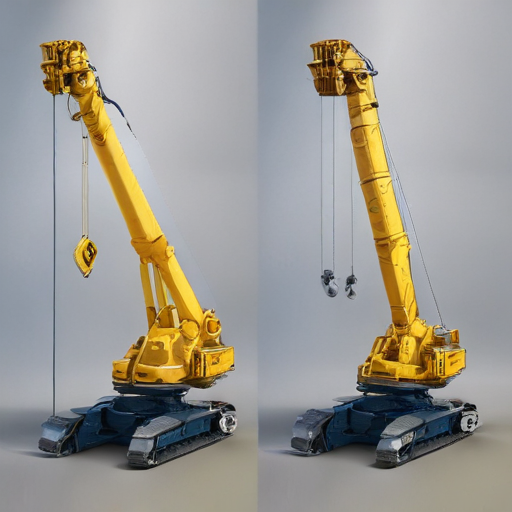
deck crane Accessories Upgrades and Custom Manufacturing Options
Deck cranes are essential for efficient cargo handling on ships and offshore platforms, and their performance can be significantly enhanced through various accessories, upgrades, and custom manufacturing options. Below are some key considerations:
Accessories:
1. Rotational Limit Switches: Enhance operational safety by preventing excessive rotation.
2. Load Indicators: Provide real-time data on the load to prevent overloading.
3. Remote Control Systems: Allow for safer and more precise operation.
4. Jib Extensions: Increase the crane’s reach for handling larger loads.
5. Anti-Sway Systems: Minimize load movement, improving safety and efficiency.
6. Lighting and Cameras: Improve visibility for night operations and remote monitoring.
7. Man Baskets: Facilitate safe personnel lifting operations.
Upgrades:
1. Hydraulic System Upgrades: Enhance lifting capacity and speed.
2. Automation Software: Implement automated control systems for improved accuracy and efficiency.
3. Energy-Efficient Motors: Reduce power consumption and operational costs.
4. Corrosion-Resistant Coatings: Extend the lifespan of the crane in harsh marine environments.
5. Advanced Stabilization Systems: Improve crane stability in rough seas.
Custom Manufacturing Options:
1. Tailor-Made Designs: Custom-designed cranes to fit unique vessel layouts and operational requirements.
2. Material Choices: Options in stainless steel, aluminum, or other specialized materials for specific operational needs.
3. Capacity Adjustments: Customization of lifting capacity to meet specific operational demands.
4. Installation Configuration: Options for pedestal, rail-mounted, or portable designs to suit different installation needs.
5. Integration with Existing Systems: Custom solutions to seamlessly integrate with existing shipboard or offshore systems.
By leveraging these accessories, upgrades, and custom manufacturing options, operators can significantly enhance the efficiency, safety, and reliability of their deck cranes, thereby optimizing their overall cargo handling and operational capabilities.
List Quality Control and The Manufacturing Process of “deck crane”
Quality Control of Deck Cranes:
1. Design Verification:
– CAD Validation: Ensure design meets specifications.
– FEA Analysis: Conduct Finite Element Analysis for stress and load calculations.
2. Material Inspection:
– Raw Material Testing: Check quality certifications of metals and components.
– Microscopic Examination: Assess material for defects like cracks.
3. Manufacturing Oversight:
– In-Process Inspection: Regular checks during fabrication and assembly.
– Welding Standards: Non-destructive testing (NDT) like X-ray and ultrasonic testing.
4. Load Testing:
– Static Load Test: Apply maximum rated load to verify structural integrity.
– Dynamic Load Test: Test operational load handling to assess performance.
5. Final Inspection:
– Dimensional Accuracy: Validate all dimensions against the design specs.
– Functional Testing: Operate the crane to ensure all functions work correctly.
6. Compliance Checks:
– Ensure adherence to international maritime and safety standards like ISO and ABS.
Manufacturing Process of Deck Cranes:
1. Design and Engineering:
– Develop detailed design and blueprints using CAD software.
– Perform simulations and structural analyses.
2. Material Procurement:
– Source high-quality steel and specialized components.
– Obtain certifications from suppliers.
3. Fabrication:
– Cutting and Shaping: Use CNC machines to cut and shape metal parts.
– Welding: Assemble primary structures using MIG/TIG welding.
– Machining: Precision machining of hinges, joints, and hydraulic parts.
4. Assembly:
– Primary Structure Assembly: Mate essential components like booms and jibs.
– Hydraulics Integration: Install hydraulic systems for movement and load lifting.
– Electrical Systems: Assemble controls, sensors, and safety systems.
5. Surface Treatment:
– Sandblasting: Remove surface impurities.
– Painting/Coating: Apply anti-corrosive paint and protective coatings.
6. Testing and Quality Control:
– Conduct rigorous load and operational tests.
– Perform final inspections for compliance with design and safety standards.
7. Installation and Commissioning:
– Ship the crane to the deployment site.
– Assemble and test the crane on-site under working conditions.
8. Training and Documentation:
– Provide training for operators.
– Supply detailed manuals and safety instructions.
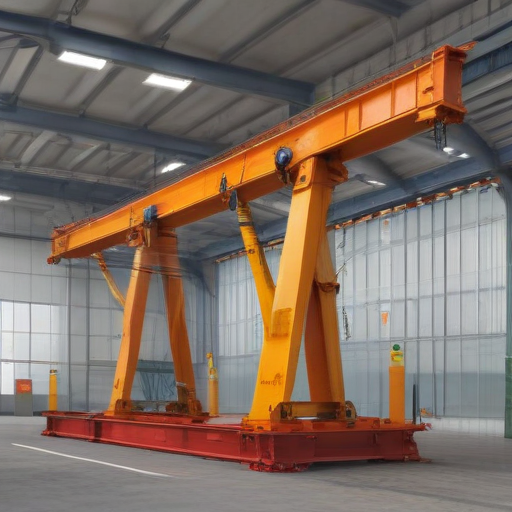
How to use “deck crane”
A deck crane is essential for handling heavy cargo on ships or offshore platforms. Here’s a step-by-step guide on how to use it safely and efficiently:
1. Inspection:
– Check Equipment: Inspect the deck crane for any visible damage or wear.
– Test Controls: Ensure all controls and safety mechanisms are functioning properly.
2. Preparation:
– Training: Only trained and certified personnel should operate the crane.
– Load Assessment: Evaluate the weight of the cargo to ensure it is within the crane’s lifting capacity.
– Safety Gear: Wear appropriate safety gear, including helmets, gloves, and safety vests.
3. Setup:
– Stabilize Crane: Ensure the crane is securely mounted and stable.
– Secure Load: Properly attach the cargo using appropriate slings or lifting tools. Double-check all connections.
4. Operation:
– Clear Area: Ensure the area around the crane and load path is clear of personnel and obstacles.
– Lift Slowly: Raise the load slowly and steadily to avoid sudden movements that can destabilize the crane.
– Use Signals: Employ hand signals or communicative devices to coordinate with other crew members.
5. Maneuvering:
– Smooth Movements: Move the load smoothly to avoid swaying.
– Monitor Load: Continuously monitor the load’s balance and stability during the transfer.
6. Placement:
– Precise Positioning: Carefully lower the load into the designated position.
– Secure Load: Once in place, make sure the load is securely positioned and stabilized.
7. Shutdown:
– Return to Base: Return the crane to its resting position.
– Power Down: Turn off the crane and lock it if possible to prevent unauthorized use.
8. Post-Operation:
– Inspect: Conduct a post-operation inspection to identify any potential issues.
– Document: Log the operation details and any problems encountered for future reference.
By following these steps, you ensure the safe and efficient use of a deck crane.
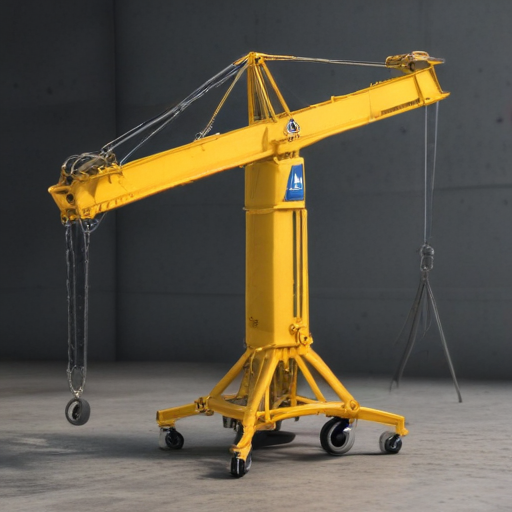
“deck crane” Comparative Analysis
Deck cranes are critical components in various industries, particularly in maritime applications, where they are used for loading and unloading cargo. This comparative analysis evaluates different types of deck cranes, focusing on hydraulic, electric, and diesel-driven models.
Hydraulic Deck Cranes
Hydraulic deck cranes are renowned for their robustness and power. They offer smooth and precise control, which is essential for handling sensitive and heavy cargo. The hydraulic system provides great lifting capacity and is relatively easier to maintain due to fewer moving parts. However, these cranes can be quite complex and require regular maintenance to keep the hydraulic fluid clean and intact. Environmental concerns exist due to potential hydraulic fluid leaks.
Electric Deck Cranes
Electric deck cranes have gained popularity due to their efficiency and eco-friendliness. They produce no emissions, aligning with global sustainability goals. Electric cranes also offer high precision and are generally quieter compared to their hydraulic counterparts. Furthermore, they require less maintenance, as they have fewer mechanical parts prone to wear and tear. However, they rely heavily on a stable power supply and may not be as powerful as hydraulic or diesel-driven counterparts for very heavy lifting tasks.
Diesel-Driven Deck Cranes
Diesel-driven cranes are highly versatile and powerful, making them suitable for remote locations where electrical infrastructure may not be available. They offer the highest load capacities among the three types but come with significant fuel consumption and emission issues. Maintenance can be more frequent due to the internal combustion engine and associated components. Diesel cranes are also noisier and may pose greater operational costs and environmental concerns.
Conclusion
Choosing the right deck crane depends largely on operational requirements and environmental considerations. Hydraulic cranes are ideal for precision and heavy lifting; electric cranes are excellent for sustainability and low maintenance; diesel-driven cranes offer unmatched power and versatility at the cost of higher environmental and operational impact. An understanding of specific use-cases and operational contexts will guide the optimal choice.
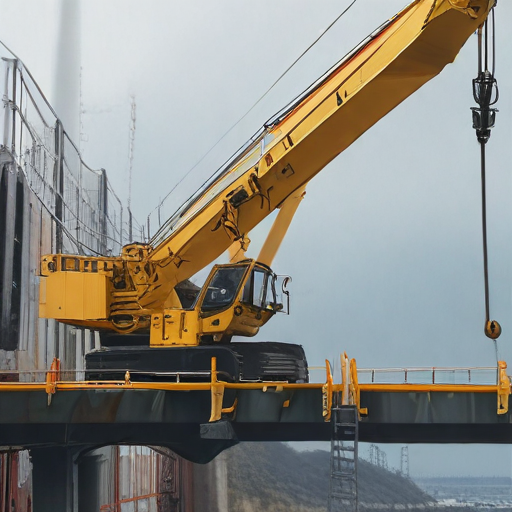
“deck crane” Warranty and Support
Warranty and Support for Deck Cranes
Our deck cranes come with a comprehensive warranty to ensure your investment is well-protected. The standard warranty period covers parts and labor for a duration of 12 months from the date of installation or 18 months from the date of shipment, whichever occurs first. During this period, any defects in materials or workmanship will be repaired or replaced at no cost to you. Extended warranty options are available upon request.
To complement the warranty, we offer robust support services to keep your deck crane functioning optimally. Our global network of certified technicians is available to provide on-site servicing, preventive maintenance, and emergency repairs. We also offer remote technical support via phone or email, ensuring you receive timely assistance regardless of your location.
Furthermore, our support package includes access to comprehensive manuals, maintenance guides, and troubleshooting documentation. Training programs are available to help your team operate the crane safely and efficiently, thereby prolonging the equipment’s lifespan.
For any warranty claims or support needs, please contact our 24/7 customer service hotline or visit our website for detailed guidelines and contact information. Our goal is to provide you with unparalleled support and service, ensuring your deck crane operates at peak performance throughout its lifecycle.
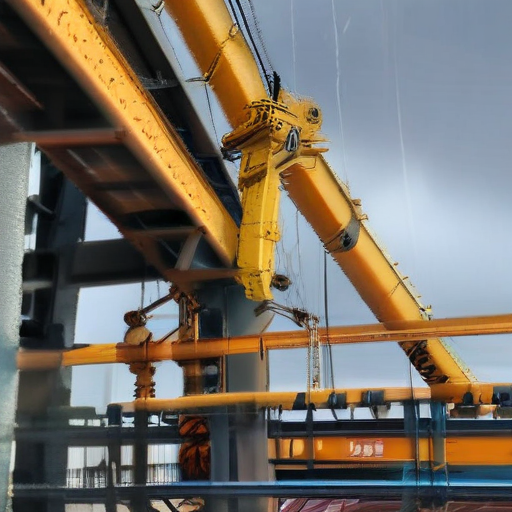
List “deck crane” FAQ
Deck Crane FAQ
1. What is a deck crane?
A deck crane is a type of lifting equipment mounted on a vessel’s deck, used for loading, unloading, and transporting materials. It is essential for various maritime operations, such as cargo transfer and material handling.
2. What are the types of deck cranes?
Common types include:
– Electro-hydraulic cranes: Powered by hydraulic systems driven by electric motors.
– Diesel-hydraulic cranes: Operate using diesel engines.
– Manually operated cranes: Require human power and are typically used for lighter loads.
3. What are the key components of a deck crane?
Core components include:
– Boom: The extended arm used for lifting.
– Winch: Hoisting device that controls the lifting and lowering of loads.
– Hydraulic system: Provides the power for movement (applicable for hydraulic cranes).
– Slewing mechanism: Allows the crane to rotate and position loads accurately.
4. What is SWL in deck cranes?
SWL stands for Safe Working Load. It indicates the maximum load a crane can safely handle and is critical for ensuring operational safety and preventing accidents.
5. How is a deck crane operated?
Operators use control panels or remote controls to maneuver the crane. Operations generally include extending and retracting the boom, raising and lowering the hook, and rotating the crane.
6. What safety measures should be observed?
Key safety measures include:
– Regular maintenance and inspections.
– Adhering to SWL limits.
– Proper training for operators.
– Use of safety gear and adherence to operational guidelines.
7. How do you maintain a deck crane?
Routine maintenance involves:
– Regular lubrication of moving parts.
– Inspection and replacement of worn components.
– Checking hydraulic and electrical systems for leaks or faults.
– Ensuring proper tension of cables and integrity of the winch system.
8. What certifications are required for deck cranes?
Deck cranes must comply with international maritime standards and certifications from relevant authorities, such as the International Maritime Organization (IMO) and classification societies like Lloyd’s Register or DNV GL.
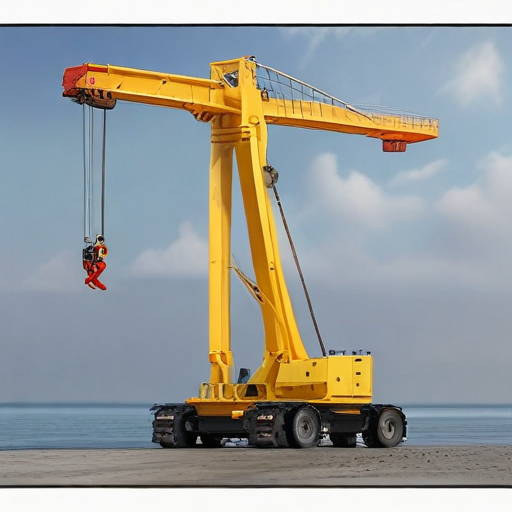
Top 10 FAQ with answer about deck crane for Buyer Sourcing from China
Sure, here are the top 10 FAQ about sourcing a deck crane from China, each with a concise answer:
1. What Types of Deck Cranes Are Available?
Chinese manufacturers offer various types, including stiff boom, telescopic boom, knuckle boom, and foldable cranes. Each type suits different operational needs and vessel sizes.
2. What Certifications Should I Look for?
Ensure the crane meets international standards such as ABS, BV, DNV-GL, LR, or RMRS. These certifications assure compliance with safety and quality regulations.
3. How Can I Verify the Manufacturer’s Credibility?
Check if the manufacturer is ISO 9001 certified, look for customer reviews and ask for references. Visiting the factory and inspecting the production process can also be valuable.
4. What Are the Lead Times for Delivery?
Lead times can vary from 3 to 6 months depending on the crane type and customization level. Confirm specific timelines with the manufacturer.
5. What Warranty and After-Sales Support Are Provided?
Most reputable Chinese suppliers offer a 1-2 year warranty. Confirm the extent of after-sales support, including availability of spare parts and technical assistance.
6. How Do I Ensure Quality Control?
Conduct third-party inspections and tests, and request factory audit reports. Many suppliers allow real-time monitoring of the manufacturing process.
7. What Payment Terms Are Acceptable?
Common terms include a 30% deposit and 70% balance before shipment. Letter of Credit (LC) is also widely accepted.
8. Can I Customize the Crane to My Specifications?
Yes, many Chinese manufacturers provide custom solutions. Discuss your specific needs including capacity, boom length, and auxiliary equipment during the initial negotiation.
9. How Are the Cranes Shipped?
Cranes are typically shipped disassembled to reduce transport costs. Ensure the supplier provides detailed assembly instructions or on-site assistance if needed.
10. What Are the Import Duties and Taxes?
Import duties depend on your country’s regulations. Consult with a customs broker to understand the applicable taxes and ensure all documentation is in order.
This succinct overview should help guide your sourcing journey for deck cranes from China.

